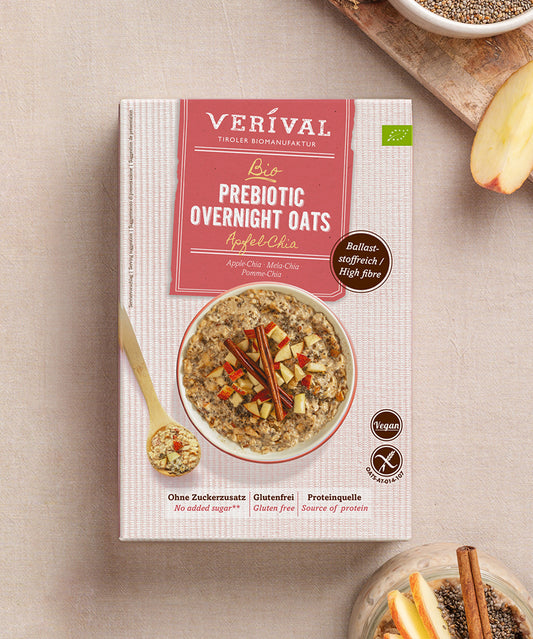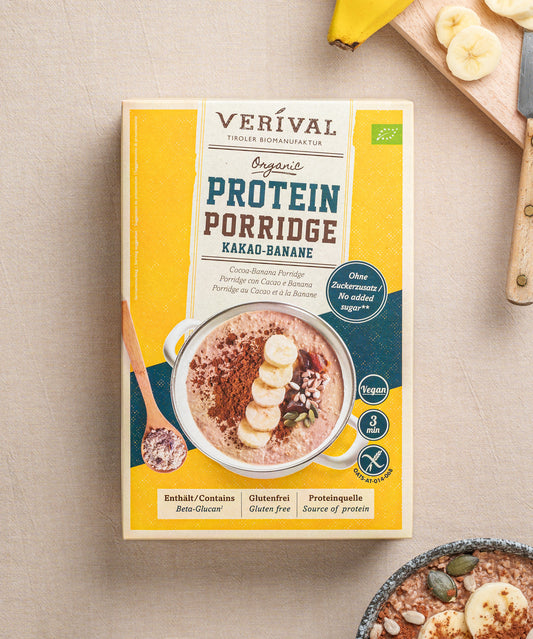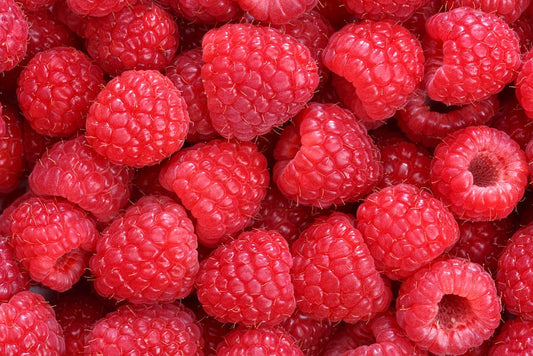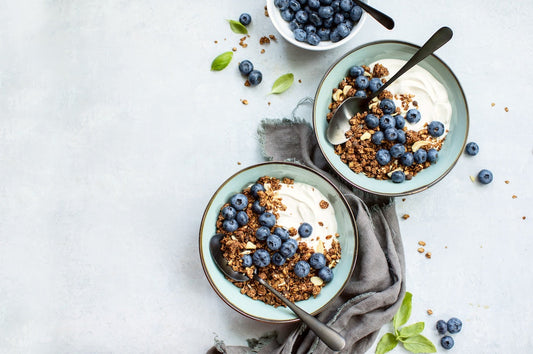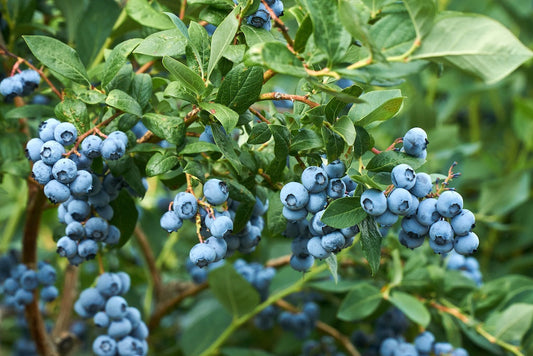Carbohydrates are often viewed negatively these days and labelled as ‘fattening’. However, this is a very one-sided view, because carbohydrates are an important source of energy for the human body. It is important to note, however, that a distinction is made between healthy and unhealthy carbohydrates.
In this blog post, we will not only review the most important facts about carbohydrates, but also explain how you can recognise where bad carbohydrates are hiding and how you can identify the good ones the next time you go shopping.
Breakfast with healthy carbohydrates – discover them now
Good vs. bad carbohydrates – here's what to look out for:
Healthy carbohydrates are so-called polysaccharides, i.e. long-chain carbohydrates that cause your blood sugar level to rise evenly and thus provide you with energy over a longer period of time.
This type of carbohydrate is mainly found in cereals, potatoes and legumes in the form of starch.
In contrast, the ‘bad’ carbohydrates are those that cause your blood sugar level to skyrocket, provide you with short-term energy and thus not only cause ravenous appetite attacks but can also be the main cause of weight gain.
These carbohydrates are described in technical jargon as mono- or disaccharides and mainly occur in the form of fructose, granulated sugar or lactose.
So much for the most important facts and terms on this topic.
What the nutrition facts table tells us about the quality of carbohydrates
Nutrition information is mandatory for all food manufacturers – so you can find it on every food package.
Seven pieces of information are mandatory and refer to a quantity of 100 grams or 100 millilitres: energy, fat, saturated fat, carbohydrates, sugar, protein and salt.
It is also possible to provide information on other nutrients (fibre, vitamins, etc.), but this is not mandatory.
The nutrition information is usually found on the side or back of the product packaging and is presented in a table. This helps us to get a good overview of the nutritional values and subsequently to cover our daily requirement of carbohydrates, proteins, fats and co.
When it comes to distinguishing good from bad, the sugar content and carbohydrates are the most important factors for us. While the term ‘carbohydrates’ refers to all types of carbohydrates that humans can digest, the term ‘ sugar ’ only describes monosaccharides and disaccharides .
This means that we can use these two details to identify the type of carbohydrate and select our products accordingly.
However, there is one more thing to bear in mind – not all sugars are the same. Whether and to what extent sugar is harmful to the body needs a little more explanation.
Find out more about carbohydrates
Sugar – artificially added or natural?
As already mentioned, we also need to differentiate between types of sugar. For example, you can't tell from the nutrition facts table whether it's added sugar or naturally occurring sugar.
However, there is a way to tell if sugar has been artificially added – it will be indicated in the ingredient list. Added sugar is often hidden behind terms such as dextrose, sucrose, fructose syrup or maltose.
Of course, honey, agave syrup and the like can also be used as sweeteners. Unlike the other artificially added sugars, these at least provide some healthy micronutrients – but you should still only consume them in small quantities, since foods that are high in sugar ultimately all have a very similar effect on the body.
Foods that are very high in sugar cause blood sugar levels to rise faster than complex carbohydrates and only satisfy you for a short time because they are digested particularly quickly due to their short-chain structure.
Nevertheless, it is a better choice to use products that use honey, dried fruit and the like as sweeteners, because these sweeteners are not only natural, but also superior in all nutritional respects, unlike classic artificially added sugars.
At Verival, we are very careful with the sugar we use in our products. Our porridges and mueslis therefore contain only small amounts of sugar – mostly in the form of freeze-dried fruit.
Breakfast with no added sugar – try it now
Be careful with diets
The nutritional information and list of ingredients are particularly important for people on a diet. This is because a restricted calorie intake or avoiding certain foods not only reduces the intake of macro-nutrients, but also of micro-nutrients. In the very popular low-carb diet, in particular, reducing carbohydrates not only eliminates important dietary fibres, but also vitamins.
To prevent a deficiency, you should therefore take special care to analyse the ingredients and nutritional values of the few carbohydrate sources.
Oat flakes and oat bran, for example, which are the main ingredients in our porridges, are particularly rich in micronutrients and dietary fibre.
Overview of good and bad carbs
Even if you can now independently recognise how to distinguish good carbohydrates from bad ones, we would still like to give you a brief overview of some alternatives to common (unhealthy) carbohydrates:
| “Bad” Carbohydrates | Alternatives |
| White bread, bread rolls, etc. | Wholemeal bread, crispbread, etc. |
| Sweetened cereals | Sugar-free cereals or porridge |
| Sweetened fruit yoghurts | Natural yoghurt with fresh fruit |
| Snacks, such as gummy bears, chips, etc. | Fresh fruit, dried fruit, nuts, etc. |






